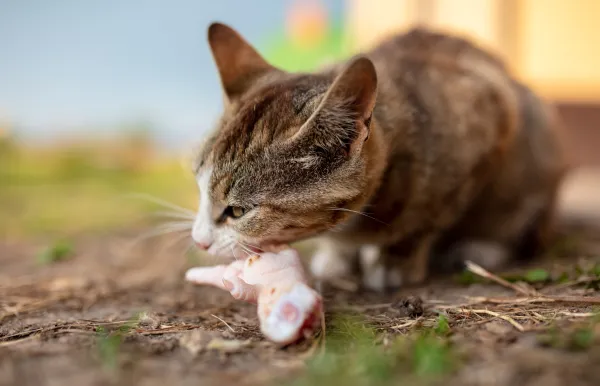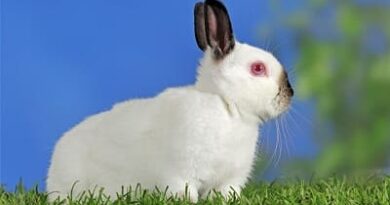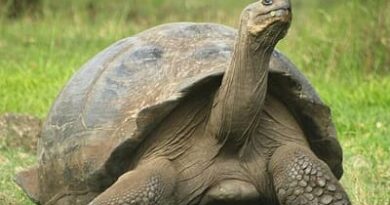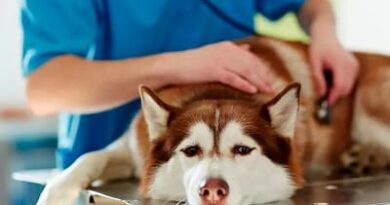Are cats carnivorous or omnivorous?
Are cats carnivorous or omnivorous?
The predatory instinct that characterizes cats makes us think almost intuitively that they are carnivorous animals. But, nevertheless, if we consult the list of ingredients of any commercial feed, it is common for us to find various foods of plant origin in its composition. So, are cats really carnivores? Or does the fact that they can consume foods other than meat make them omnivorous animals?

Are cats carnivorous, herbivorous or omnivorous?
Are cats carnivores or herbivores? Surely, when reading this question you have intuitively answered that cats are carnivorous animals, since it is well known that felines are animals with a lifestyle based on hunting. But, would you know if cats are carnivorous or omnivorous? Faced with this question, you may have certain doubts, since a large part of the commercial feed available for cats contains a combination of products of animal and vegetable origin.
Well, despite the confusion that this fact may cause us, you should know that cats, like dogs, are carnivorous animals . In the next section, we will explain what type of carnivore the cat is and what are the nuances that differentiate the diet of cats and dogs.
What kind of carnivore is the cat?
Both cats and dogs are carnivorous animals, however cats have a considerably higher protein requirement than dogs. This nutritional need makes the cat a strict carnivore , that is, an animal whose main source of food must be meat and other products of animal origin.
On the contrary, the dog is considered a facultative carnivorous animal (also called an adaptive omnivore), which means that, although its diet must include meat as a raw material, it is also capable of digesting and assimilating nutrients such as carbohydrates, present in plant-based foods.
Why are cats carnivores?
Although there are various trends that are committed to feeding pets vegetarian or vegan diets, the truth is that cats are essentially carnivorous animals, and this is evidenced by the following arguments:
- Anatomical and physiological issues : both the teeth and the rest of the digestive system of cats have an anatomical design typical of carnivorous animals. Their small but powerful jaws are poised to catch their prey and tear through meat with ease. Their gastrointestinal tract is much shorter than that of non-carnivorous animals, which means that cats have faster digestions and are prepared to digest mainly simple materials, such as proteins and fats. Their large intestine (the place where complex carbohydrates are digested) is also short, which explains why they have some difficulty digesting carbohydrates. In addition, the sensory system of cats is specially adapted to be stimulated by the components and sensory qualities of meat.
- Metabolic issues : unlike other animals, cats are not able to adjust their metabolism to a low protein diet , but in this situation, they consume the protein stored in their body (mainly in the muscle) to meet their needs. In addition, cats are not capable of synthesizing some specific amino acids, such as arginine or taurine, which forces them to consume them through meat to avoid nutritional deficiencies. On the other hand, cats have little activity of the enzymes amylase and maltase (enzymes that break down carbohydrates), which makes it difficult to digest these nutrients.
- Evolutionary issues : the cat has been an animal that, naturally, has always maintained a lifestyle based on hunting. During the domestication process, the cats hardly changed their nutritional or behavioral needs, which could be due to the fact that, being very efficient as predators, they were able to continue maintaining a diet rich in meat. That is, despite domestication, they were subjected to very little «evolutionary pressure» that forced them to change their diet, hence they continued to base their diet on meat consumption. Unlike cats, dogs were subjected to much greater pressure, since their domestication was largely linked to the consumption of the waste that human beings originated in their first settlements, which usually contained foods of plant origin.
How should a cat’s diet be?
We already know that cats are strict carnivores, but exactly what do cats eat? If you want to know, continue reading this section, in which we will discuss in more depth the feeding of these small cats.
The importance of palatability
To begin, we will begin by talking about palatability, that is, the characteristics that food must have to make it attractive and pleasant for our kittens. Cats have a highly developed olfactory apparatus, which makes the perception of the smell of food very important to initiate its intake. Therefore, in this species, it is especially relevant to formulate diets with aromas that are attractive .
The texture of the food also affects its palatability and the speed of ingestion. Generally, wet diets are more palatable and easier to ingest, which causes them to be devoured quickly; on the contrary, dry foods require more chewing, which forces them to be eaten at a slower and more constant speed. Temperature also plays an important role in food selection, as most cats prefer to eat food that is at a temperature of around 35ºC . This is because hot food has a greater aroma and palatability, since freshly caught prey tends to be at this temperature.
Nutritional needs of cats
To design a balanced diet appropriate to the nutritional needs of cats, it is necessary to take into account the following points:
- Proteins : Since cats are strict carnivores, their diet should contain around 30% crude protein, if we are talking about commercial food. Of this protein, it is recommended that around 50-60% be of animal origin, since its biological value is greater than that of vegetable protein.
- Fats : they are the main source of energy. In the case of cats, the diet should include around 10% fat, with animal fats being especially important, which are a source of arachidonic acid (essential fatty acid for cats, since they cannot synthesize it).
- Carbohydrates : as we have already seen, cats have some difficulty digesting carbohydrates and, in addition, they are capable of synthesizing glucose from protein. However, the diet of cats should not only include meat as a raw material, since this can cause imbalances in the calcium / phosphorus balance and lead to metabolic diseases. Therefore, for the diet of these animals to be balanced, up to 30% carbohydrates must be included.
- Essential nutrients : there are certain nutrients that cannot be synthesized by the cat’s body. These animals show some inefficiency for the synthesis of taurine and arachidonic acid , they lack the enzyme that transforms beta – carotene into vitamin A and they can not transform tryptophan into vitamin B3 , which makes it necessary to provide these nutrients through food to avoid the appearance of deficiency diseases.
Other recommendations
Regarding the management of food, we must point out some important aspects. In general, cats are animals that regulate their intake well , that is, they usually limit themselves to eating the amount of food they need to satisfy their energy requirements. Compared to dogs, they are less voracious animals and better chewers, which allows them to offer food ad libitum (freely available). However, in sedentary animals or those with a tendency to obesity, it is advisable to restrict access to food, dividing the daily ration into two or three meals.
To conclude, it is important to remember that cats should always have a source of clean and fresh water at their disposal, since they are animals with a tendency to consume little water, precisely because of their condition as strict carnivores (animal meat provides the percentage of humidity it needs) which makes them especially prone to kidney disease.



